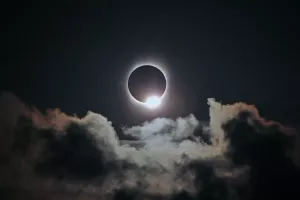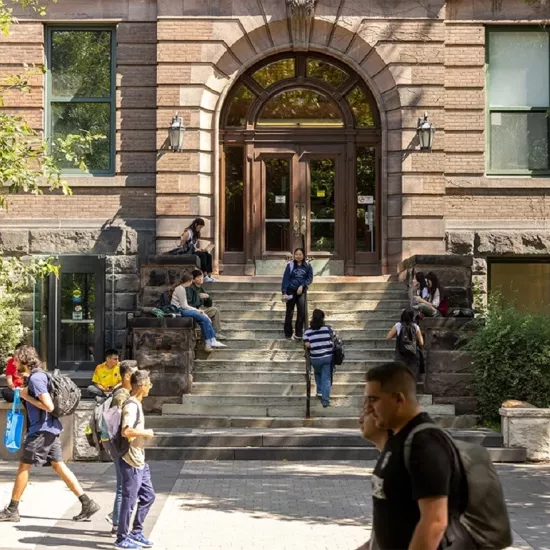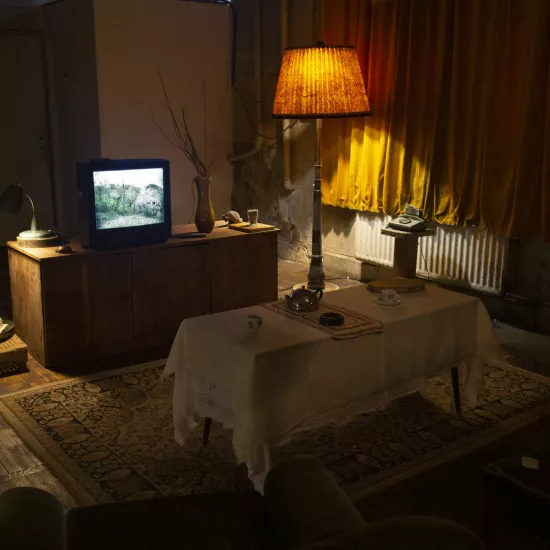Eye on the Sky: See the solar eclipse at UTM

U of T Mississauga is ready to welcome the upcoming solar eclipse with a special viewing party on campus on Monday, Aug. 21, from 1:30 to 3:30 p.m. in the open space between the Davis Building and the Kaneff Centre. Everyone is welcome to attend the event, which is hosted by UTM astronomer Professor John Lester of the Department of Chemical & Physical Sciences.
As an astrophysicist, Lester has studied the stars for more than four decades. Although solar and lunar eclipses occur about every six months, Lester says the upcoming eclipse is special because it’s the first time in several decades that a total solar eclipse has been visible from continental North America. During a solar eclipse, the moon moves between the sun and the Earth, blocking the light from the sun and casting a shadow on the Earth.
Catching a total solar eclipse is a matter of being in the right place at the right time. “To see a total eclipse, everything has to be perfectly aligned,” he says. “The moon must be at a new phase and crossing the Earth’s orbit. It must be closer to Earth, and Earth must be father from the sun.” Time of day is important, too—skywatchers can’t see a solar eclipse if their location is on the dark, nighttime side of the Earth.

Even Lester, a seasoned stargazer, hasn’t observed a solar eclipse from a “path of totality” location—the spot where the full effects of the eclipse can be seen. In this case, the path of totality is a 100-km-wide band stretching from Oregon to South Carolina. “I’ve read that it is a very visceral experience—the air cools, it can become dark enough to see stars, and animals behave as if it were nighttime,” Lester says. Many avid stargazers, including UTM Aboriginal elder Cat Criger, are travelling to ensure they have the best spot to view the eclipse.
Although observers in Mississauga won’t see the full effect of the eclipse, Lester says many signs will be visible. According to the Royal Astronomical Society of Canada, the eclipse will start at 1:10 pm. At 2:33pm it will be maximum eclipse and approximately 75 per cent of the sun will be covered. The eclipse will end at 3:49pm.
“From our location, the moon will cover more than half of the sun,” he says. “It won’t be totally dark, but we might notice the sun’s light is less intense than usual, similar to what you might experience on a cloudy day, and you will be able to see the moon cross the sun with the equipment we will have on hand.”
Viewing the eclipse directly can cause irreversible eye damage, so Lester will provide a telescope fitted with solar filters, special eclipse-viewing spectacles and pin-hole cameras so viewers can safely see the action.
“It appears that there’s another path of totality coming near to Mississauga in 2024,” he says. “That eclipse wouldn’t require a big trip to view it in person.” It’s worth it to look up at night, too, he says. “Lunar eclipses, where the Earth comes between the sun and the moon, occur with a similar frequency, but anyone on the night side of Earth can see it without being in the path of totality.”
Lester, who caught the astronomy bug during his graduate studies in physics, has travelled to Chile, Hawaii and Arizona to study the stars. “It takes a lot of imagination to be in astronomy because you don’t have a physical connection to what you’re studying. It take a lot of thinking outside the box to understand what you’re seeing,” Lester says. “It’s about learning our place in the grand scheme of things.”
Read more:
Want to make your own pinhole camera? All you need is some card stock or card board, tape, scissors and tinfoil. Instructions here >
Solar Eclipse in Toronto > U of T experts on what you need to know



